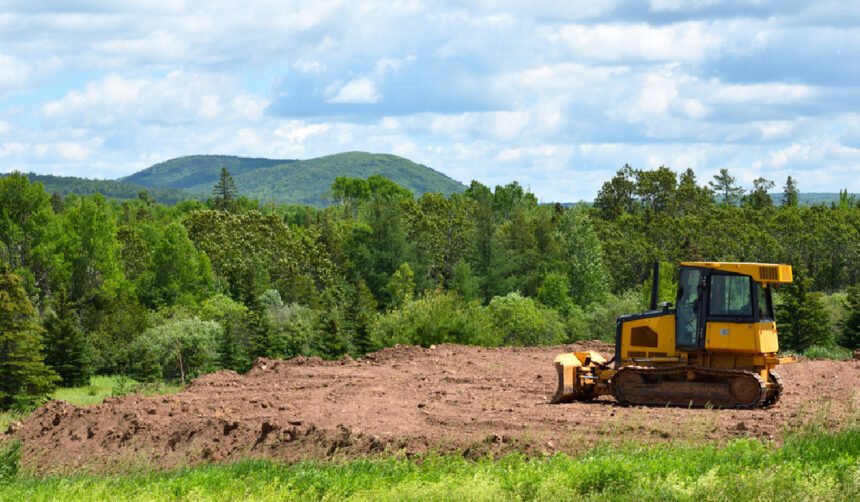Before any structure is built, any crops are planted, or any development is initiated, there is one crucial step that must take place: preparing the land. At the heart of this preparation lies a process that’s fundamental to progress but often overlooked in broader conversations about development—land clearing. This article explores what land clearing entails, why it’s important, the methods used, and the many considerations that come into play before and during the process.
Land clearing is much more than just removing trees or vegetation. It is a critical part of reshaping the natural environment in a controlled and responsible way to allow for construction, agriculture, or other types of land use. Done correctly, it can enhance productivity, support sustainable practices, and ensure safety for future developments.
What Is Land Clearing?
Land clearing refers to the process of removing natural obstacles such as trees, stumps, brush, rocks, and other vegetation from a plot of land. The goal is to make the land suitable for building, farming, or other human activities. It may also involve leveling uneven ground or removing contaminated soil.
While the concept might seem simple, it involves a combination of planning, environmental considerations, and the use of specialized equipment. The work can vary from clearing a small residential lot for a home to preparing hundreds of acres for commercial or agricultural use.
Why Land Clearing Is Necessary
The need for land clearing arises in multiple scenarios across different industries. Below are some of the primary reasons:
1. Preparation for Construction
Before any building can begin, the site must be free of trees, roots, and rocks that could obstruct excavation or compromise a building’s structural integrity. Clearing the land allows for easier access, accurate grading, and a clean surface on which to build.
2. Agricultural Development
In farming, land must often be cleared before planting crops or creating grazing areas for livestock. This helps improve soil quality, drainage, and sunlight exposure.
3. Fire Risk Reduction
Removing dead trees, dense brush, and dry vegetation lowers the risk of wildfires. In fire-prone areas, land clearing can be a life-saving measure.
4. Improved Accessibility
Cleared land is easier to navigate and maintain. Whether for roads, trails, or infrastructure development, removing physical barriers allows people and machinery to access the area safely and efficiently.
5. Pest and Disease Control
Dense brush and fallen vegetation often harbor pests, fungi, and diseases. Clearing the area reduces these risks, especially in agricultural or residential zones.
Methods of Land Clearing
There are various techniques used in land clearing, and the method chosen depends on the size of the project, the type of vegetation, soil conditions, environmental regulations, and the future use of the land.
1. Manual Clearing
This method uses hand tools like chainsaws, axes, and machetes. It’s best for small areas or when only a few trees or shrubs need to be removed. Though labor-intensive, manual clearing allows for more precise removal.
2. Mechanical Clearing
Heavy machinery such as bulldozers, excavators, mulchers, and brush mowers is used to quickly clear large areas. This is the most efficient option for commercial or large-scale projects. However, it may require significant soil restoration afterward.
3. Controlled Burning
In some cases, fire is used to clear vegetation. This method is risky and must be carefully managed by professionals, especially considering weather conditions and local fire regulations.
4. Chemical Clearing
Herbicides can be applied to kill unwanted vegetation over time. This is typically used in combination with other methods and is more common in agriculture than construction.
Each method comes with its own set of pros and cons. The key is choosing the right combination based on safety, efficiency, environmental impact, and long-term plans for the site.
Equipment Commonly Used in Land Clearing
The type of equipment used greatly influences the speed and quality of a land clearing project. Here are some of the most commonly deployed machines:
- Bulldozers: Powerful machines that push over large trees and brush. Ideal for large-scale clearing.
- Excavators: Equipped with various attachments for digging, lifting, and removing stumps or rocks.
- Skid Steers: Versatile and compact, perfect for smaller or more detailed work.
- Mulchers: Turn trees and brush into mulch directly on-site, reducing the need for debris hauling.
- Stump Grinders: Used to remove tree stumps below the ground level to ensure smooth grading.
Using the right machinery not only improves efficiency but also minimizes soil disturbance and promotes cleaner results.
Environmental Considerations
Land clearing can have significant environmental impacts if not handled correctly. The removal of vegetation can lead to soil erosion, habitat loss, and increased runoff, which may contaminate nearby water sources.
To minimize environmental harm, responsible land clearing should include:
- Erosion Control: Implementing silt fences, retaining walls, or cover crops to prevent soil from washing away.
- Tree Preservation: Saving certain trees or buffer zones to maintain biodiversity.
- Permits and Regulations: Ensuring compliance with environmental laws and obtaining the necessary approvals before starting.
- Replanting Plans: In some cases, developers may be required to plant new trees or vegetation after a project is complete.
Sustainable practices ensure the long-term usability of the land and demonstrate a commitment to environmental responsibility.
Safety Measures During Land Clearing
Safety is paramount in any land clearing project. Operating heavy machinery, cutting down trees, or managing fires comes with serious risks.
Best practices include:
- Conducting site inspections to identify potential hazards.
- Wearing appropriate personal protective equipment (PPE).
- Ensuring all operators are trained and licensed.
- Maintaining a safe distance from operating equipment.
- Having emergency plans and first aid readily available.
Professional teams understand the risks and have the experience to manage them, making them the preferred choice for land clearing projects.
The Importance of Proper Planning
Before starting any land clearing operation, it’s essential to plan the process carefully. Here’s what a typical planning phase looks like:
1. Site Survey and Analysis
A thorough inspection identifies trees, rocks, water sources, and slope conditions. This information determines the best approach to clearing.
2. Soil Testing
Understanding soil quality is important, especially for agriculture or building. It helps determine how much grading or amending will be needed.
3. Utility Check
Confirming the presence of underground utilities like water, electricity, or gas lines is critical to avoid accidents.
4. Environmental Assessment
This ensures the area is not home to protected species or sensitive habitats, and that clearing is permitted.
5. Logistics and Timeline
Creating a realistic schedule, sourcing the necessary equipment, and assembling a skilled team help the project stay on time and budget.
Post-Clearing Land Management
Once the land has been cleared, additional steps may be needed to prepare it for its intended use. These might include:
- Grading and Leveling: Smoothing the land surface for construction or planting.
- Soil Enrichment: Adding nutrients or organic matter to improve fertility.
- Drainage Installation: Ensuring water runoff is controlled to prevent flooding or erosion.
- Debris Disposal or Recycling: Transporting or repurposing organic materials removed during clearing.
Maintaining the cleared land is just as important as the initial process. Without proper follow-up, issues like erosion or invasive weed growth can undo all the initial efforts.
Choosing a Professional Land Clearing Service
While some property owners may attempt land clearing on their own, it’s generally advisable to hire experienced professionals. Certified land clearing contractors offer:
- Knowledge of local regulations and permits
- Access to commercial-grade machinery
- Skilled operators for safe and effective work
- Environmentally sound practices
- Time and cost efficiencies
The investment in professional service often pays off in the form of reduced risks, faster turnaround, and better outcomes overall.
Final Thoughts
Land clearing is one of the most fundamental steps in transforming raw terrain into functional space. Whether the goal is to build, farm, or simply improve the usability of land, the clearing process sets the stage for everything that follows. From choosing the right clearing method to understanding environmental and safety concerns, successful land clearing requires a strategic approach.
With professional planning and execution, cleared land becomes a blank canvas—ready to support homes, businesses, crops, or infrastructure. And as technology continues to evolve, the future of land clearing is poised to become more efficient, sustainable, and precise than ever before.
For More Information, Visit Dotmagazine









